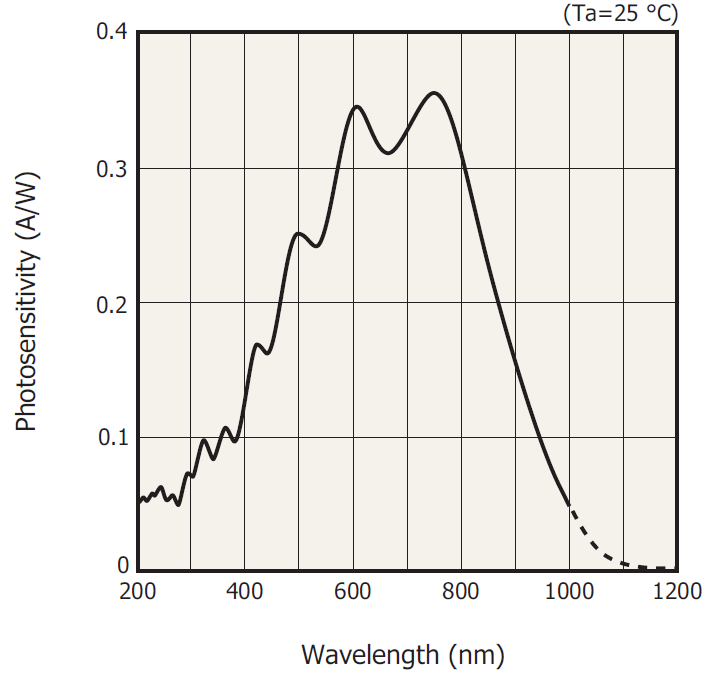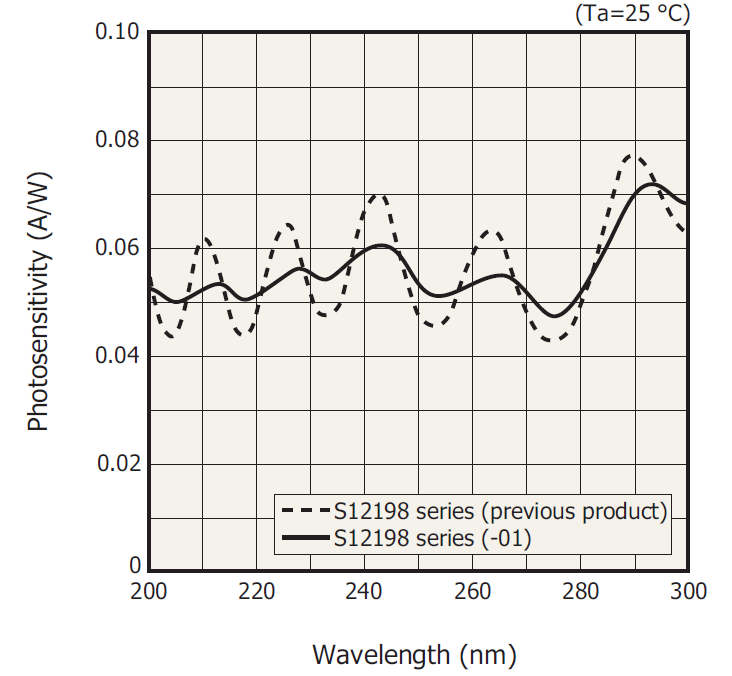This article provides a technical overview of CMOS sensors and guidance on selection.
CMOS sensors cover the spectral range of 200 to 1000 nm:
When selecting a CMOS sensor the following should be considered:
The following Hamamatsu CMOS sensors are available:
These are active pixel sensors (APS) with a very high sensitivity. They are suited for:
The drawback of APS sensors is a low well-depth. The well-depth is typically a few 100 ke-. As a result the shot noise is significant and limits the signal-to-noise ratio (SNR) to around 500. However, for low-light measurements the APS sensors are an excellent choice. Noise can further be reduced by averaging.
Standard sensors (large well-depth) have low sensitivity and are suited for high-intensity measurements. They are suited for:
The well-depth is typically several 1 Me-. Given high enough light intensity, the shot noise is lower compared to APS sensors and the shot noise limited signal-to-noise ratio (SNR) is above 2500. Standard (large well-depth) sensors are recommended for applications with sufficient light intensity and will outperform APS sensors.
Compared to InGaAs sensors, CMOS sensors have lower dark currents and don't require cooling. CMOS sensors can handle integration times of several seconds without the dark current degrading the measurement.
The spectral range of CMOS sensors are limited to 200 to 1000 nm (UV, visible and NIR). CMOS sensors are usually supplied with quartz windows which limits UV transmission to 200 nm. Below is the typical spectral response of a CMOS sensors:

Hamamatsu provides newer versions of their sensors on a regular basis with improved spectral response. Below is an example of the S12198 (old version) and S12198-01 (new version) with improved spectral response in the UV:

CMOS are sensitive to VUV radiation and without quartz windows the spectral range can be increased to 140 to 1000 nm (VUV, visible and NIR). Please enquire about windowless CMOS sensor options. Below is an example of the S11639N (windowless version of the S11639):

The maximum readout clock speed for CMOS sensors is 10 MHz. The clock speed and number of pixels determine the maximum line rate:
Compared to other CMOS sensor manufacturers, Hamamatsu provides CMOS sensors with large pixel heights ranging from 0.2 to 0.5 mm. The pixel pitch depends on the pixel count and ranges from 14 to 25 um.
Below is a summary of available sensors: